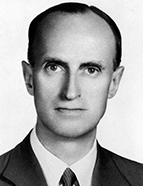

In the field of Art History, Mário Tavares Chicó was one of the main promoters of the new historiographical perspectives that began to emerge in the mid-20 th century, generating a historiographical movement that ran parallel to the official historiography of the Estado Novo and often contradicted its ideals. Mário Chicó had realised the epistemic limitations of historiography in Portugal, whose evolution had reached a point of stagnation. In need of a methodological and qualitative leap forward, his research anticipated a new historiographical direction, relying on the diversification of sources and multidisciplinary contributions (Sociology, Anthropology, Economics, Ethnography, Philosophy, etc.). From a theoretical point of view, his main influences are to be found in the studies of the two French masters mentioned above, along with Heinrich Wölfflin, Alois Riegl and Wilhelm Worringer, while part of his methodology derives from the works of Portuguese researchers, namely Joaquim de Vasconcelos, Vergílio Correia, Manuel Monteiro, Reinaldo dos Santos and Aguiar Barreiros. During his academic career he taught at the universities of Poitiers, La Laguna (Tenerife), Milan, Baía, Rio de Janeiro and Recife, where he received an Honorary Doctorate and was awarded the Order of the Southern Cross in Brazil.
Mário Chicó was also a pioneer in the study of Portuguese-influenced architecture built outside Europe. Studies into “ colonial art ” – a simplistic term, but an appropriate one in this case – had begun a few decades earlier, focussing on the Latin American world, including Brazil. These studies were developed by researchers from the New World with the aim of studying their own artistic history, but several European scholars also took part in this movement. In fact, researchers ’ interest in European artistic productions in Asian and African geographical spaces only began to emerge in the mid-20 th century. Mário Chicó ’ s proposal to the Director General of Higher Education and Fine Arts at the beginning of 1951 to set up a brigade to study the monuments of the State of India – the homeland of his adoptive grandfather – is therefore not surprising. This was an important moment in the change in his academic interests, leaving Portuguese Gothic a little behind in order to study colonial Renaissance, Mannerist , and Baroque architecture in greater depth.
This work is financed by national funds through FCT - Foundation for Science and Technology, I.P, in the scope of the projects UIDB/04311/2020 and UIDP/04311/2020.
